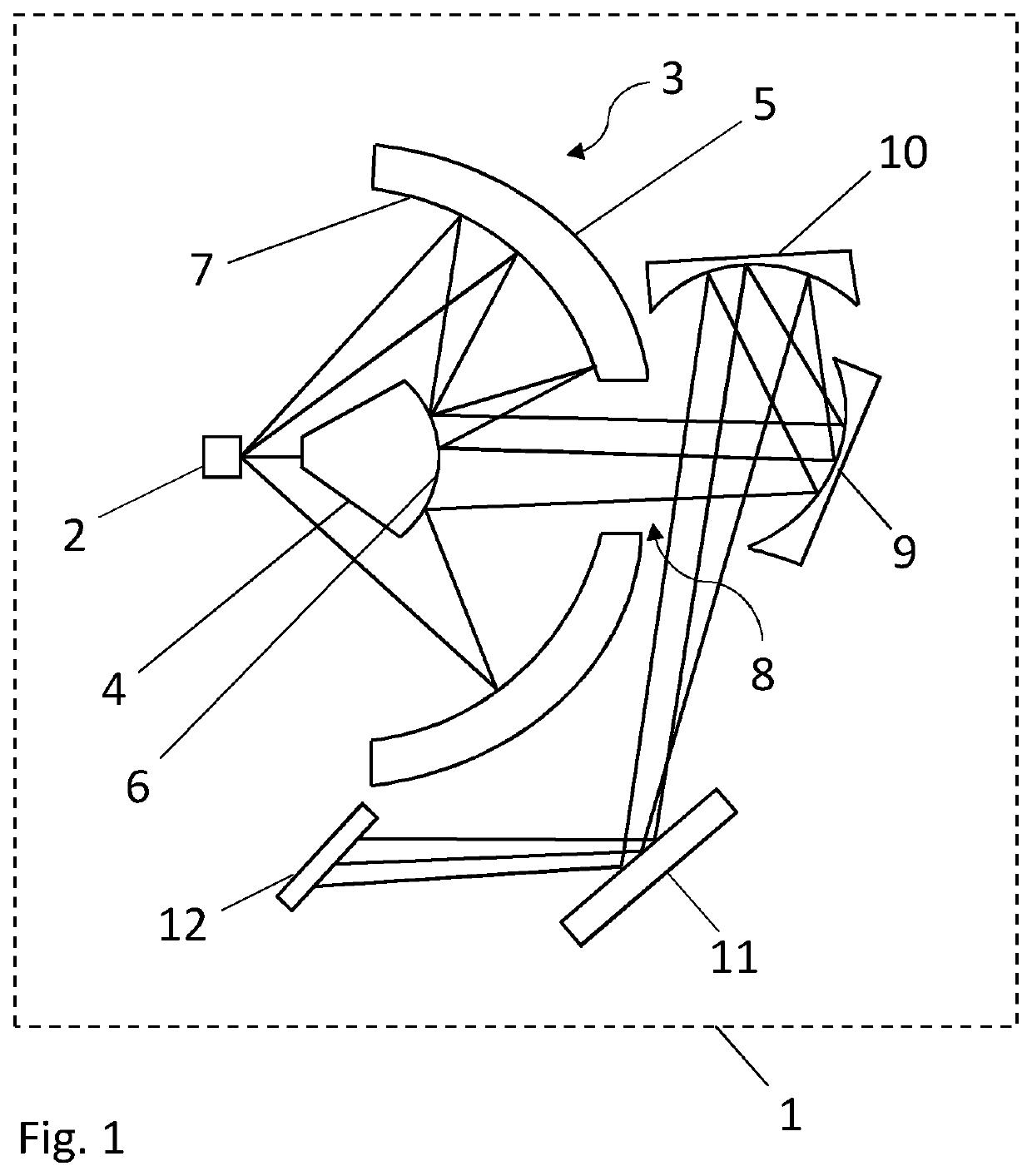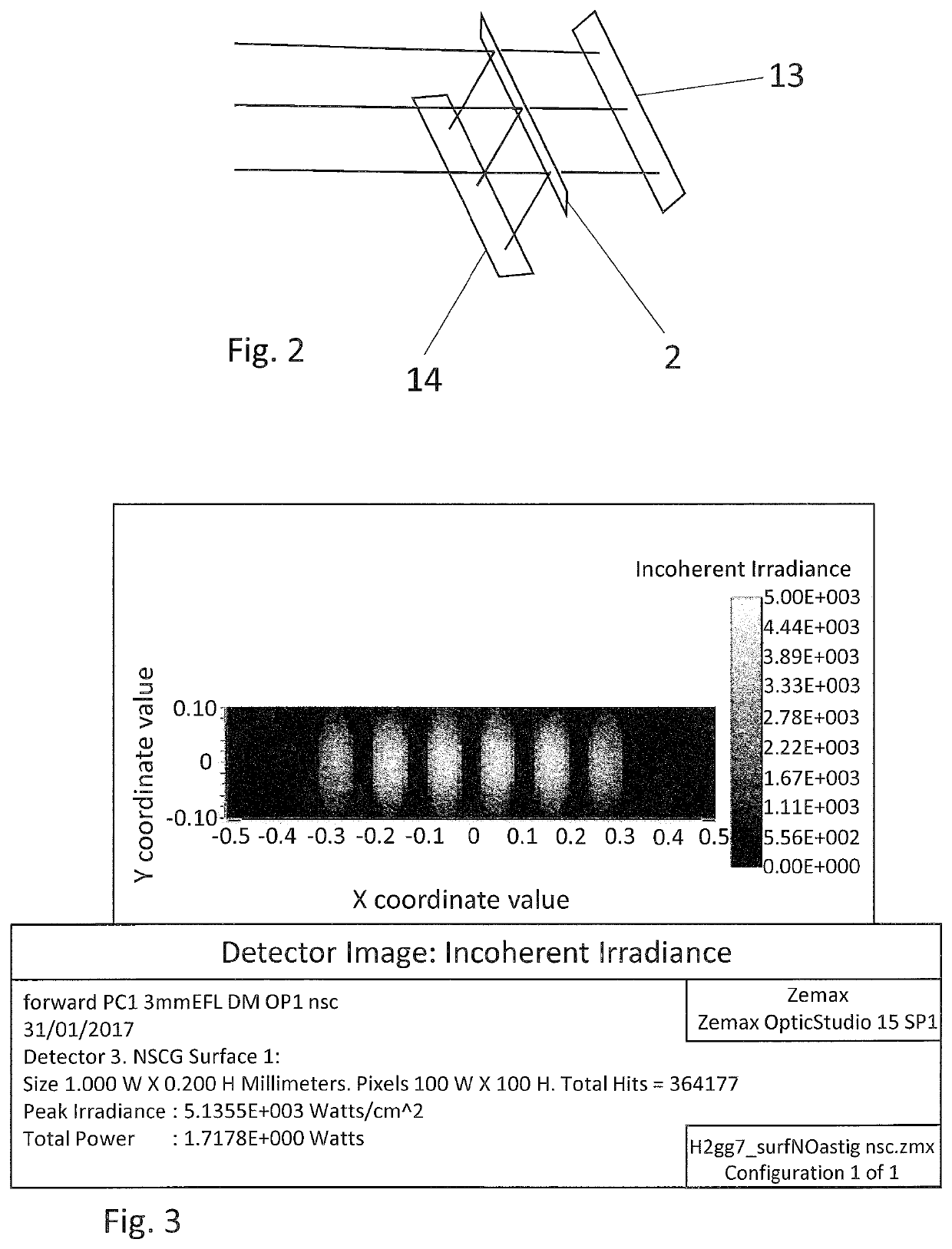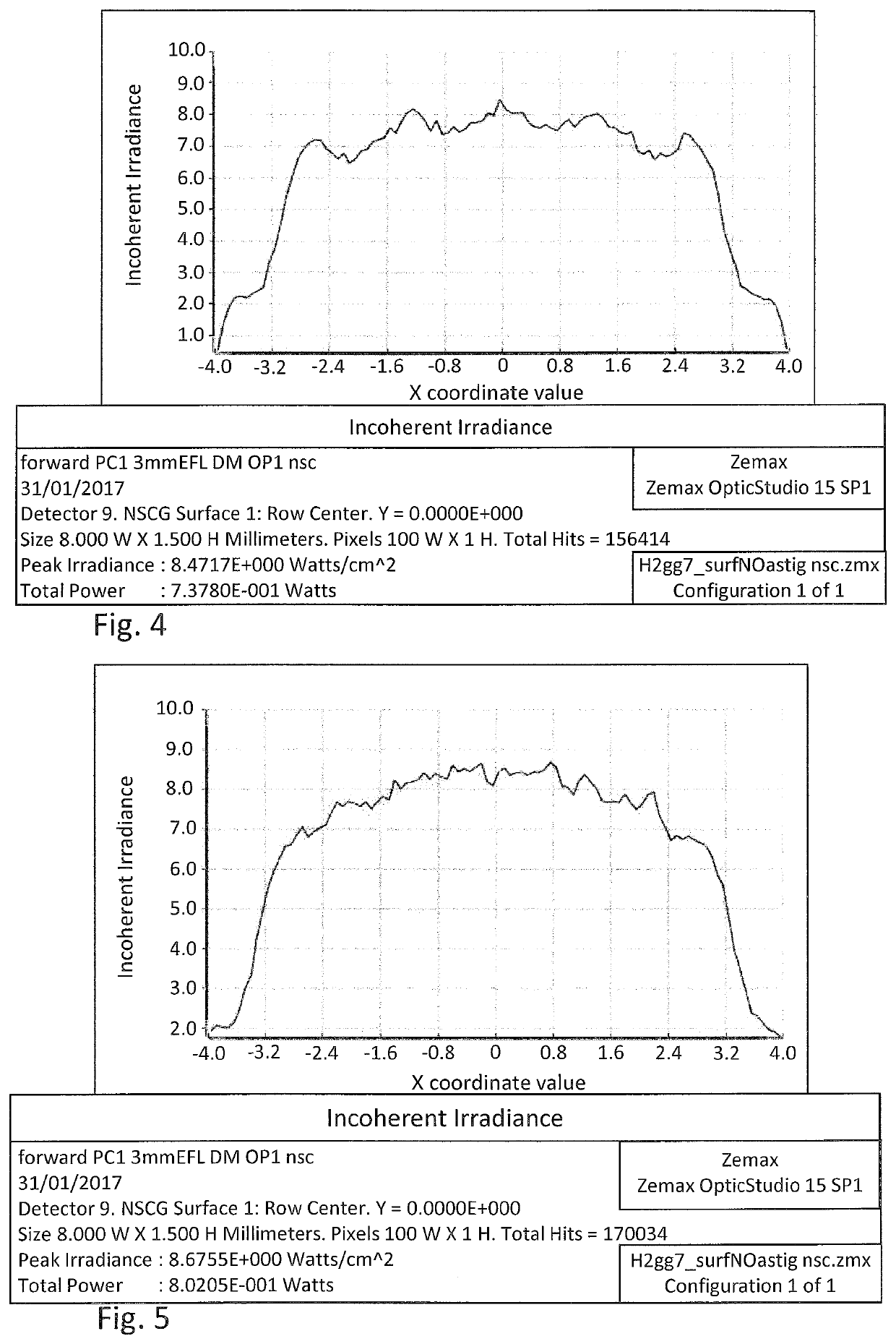Infrared spectrophotometer
a spectrophotometer and infrared technology, applied in the field of optical sensors, can solve the problems of limiting the uptake of commercial and consumer applications, consuming a lot of power, and expensive ir systems
- Summary
- Abstract
- Description
- Claims
- Application Information
AI Technical Summary
Benefits of technology
Problems solved by technology
Method used
Image
Examples
Embodiment Construction
[0181]FIG. 1 shows the optical configuration of a multispectral sensor 1. Although the sensor may be used to detect analytes in a sample of any light-permeable fluid such as a gas or a liquid, this example embodiment focuses on the detection of analytes in a gas sample.
[0182]The sensor has a broadband infrared light source consisting of a MEMS hotplate 2. The hotplate 2 is configured to emit infrared light having wavelengths in the range 2000 nm to 14000 nm. The hotplate comprises a linear array of light-emitting hotspots which are formed by current density focusing due to a periodic spatial variation in the resistance of the hotplate. The output from the MEMS hotplate 2 can be modulated (for example pulse-wave modulated).
[0183]A reflective collector 3 consists of a first reflector 4 and a second reflector 5. Both first and second reflectors 4 and 5 are formed from injection moulded plastics materials coated with gold. The first reflector 4 has a substantially hemispherical, convex ...
PUM
| Property | Measurement | Unit |
|---|---|---|
| wavelengths | aaaaa | aaaaa |
| wavelengths | aaaaa | aaaaa |
| wavelengths | aaaaa | aaaaa |
Abstract
Description
Claims
Application Information
 Login to View More
Login to View More - R&D
- Intellectual Property
- Life Sciences
- Materials
- Tech Scout
- Unparalleled Data Quality
- Higher Quality Content
- 60% Fewer Hallucinations
Browse by: Latest US Patents, China's latest patents, Technical Efficacy Thesaurus, Application Domain, Technology Topic, Popular Technical Reports.
© 2025 PatSnap. All rights reserved.Legal|Privacy policy|Modern Slavery Act Transparency Statement|Sitemap|About US| Contact US: help@patsnap.com



